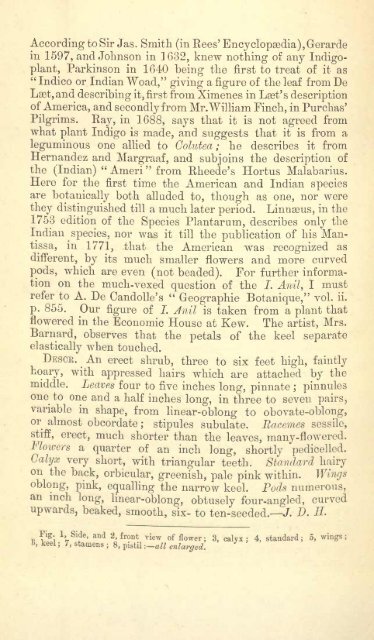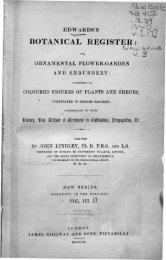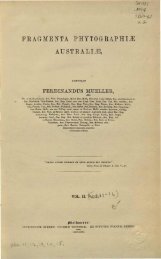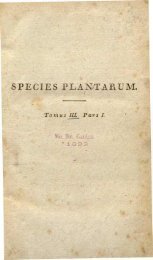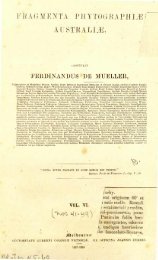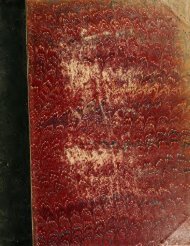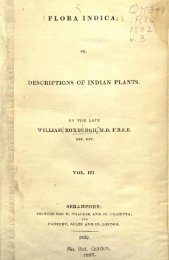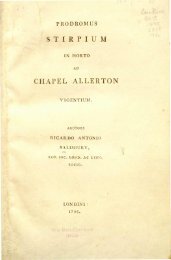Botanical Magazine 106 - 1880.pdf - hibiscus.org
Botanical Magazine 106 - 1880.pdf - hibiscus.org
Botanical Magazine 106 - 1880.pdf - hibiscus.org
Create successful ePaper yourself
Turn your PDF publications into a flip-book with our unique Google optimized e-Paper software.
According to Sir Jas. Smith (in Rees' Encyclopaedia), Gerarde<br />
in 1597, and Johnson in 1632, knew nothing of any Indigo-<br />
plant, Parkinson in 1640 being the first to treat of it as<br />
"Indico or Indian Woad," giving a figure of the leaf from De<br />
Last,and describing it, first from Ximenes in Last's description<br />
of America, and secondly from Mr.William Finch, in Purchas'<br />
Pilgrims. Ray, in 1688, says that it is not agreed from<br />
what plant Indigo is made, and suggests that it is from a<br />
leguminous one allied to Golutea ; he describes it from<br />
Hernandez and Margraaf, and subjoins the description of<br />
the (Indian) " Ameri " from Rheede's Hortus Malabarius.<br />
Here for the first time the American and Indian species<br />
are botanically both alluded to, though as one, nor were<br />
they distinguished till a much later period. Linnasus, in the<br />
1753 edition of the Species Plantarum, describes only the<br />
Indian species, nor was it till the publication of his Man-<br />
tissa, in 1771, that the American was recognized as<br />
different, by its much smaller flowers and more curved<br />
pods, which are even (not beaded). For further informa-<br />
tion on the much-vexed question of the I. Anil, I must<br />
refer to A. De Candolle's " Geographie Botanique," vol. ii.<br />
p. 855. Our figure of I. Anil is taken from a plant that<br />
flowered in the Economic House at Kew. The artist, Mrs.<br />
Barnard, observes that the petals of the keel separate<br />
elastically when touched.<br />
DESCE. An erect shrub, three to six feet high, faintly<br />
hoary, with appressed hairs which are attached by the<br />
middle. Leaves four to five inches long, pinnate ; pinnules<br />
one to one and a half inches long, in three to seven pairs,<br />
variable in shape, from linear-oblong to obovate-oblong,<br />
or almost obcordate ; stipules subulate. Racemes sessile,<br />
stiff, erect, much shorter than the leaves, many-flowered.<br />
Flowers a quarter of an inch long, shortly pedicelled.<br />
Calyx very short, with triangular teeth. Standard hairy<br />
on the back, orbicular, greenish, pale pink within. Wings<br />
oblong, pink, equalling the narrow keel. Pods numerous,<br />
an inch long, linear-oblong, obtusely four-angled, curved<br />
upwards, beaked, smooth, six- to ten-seeded.•J. D. H.<br />
v T lg \ 1 L SI ? e ' and 2, front view of flower; 3, calyx: 4, standard; 5, wings;<br />
b, keel ; 7, stamens ; 8, pistil •all enlarged.


